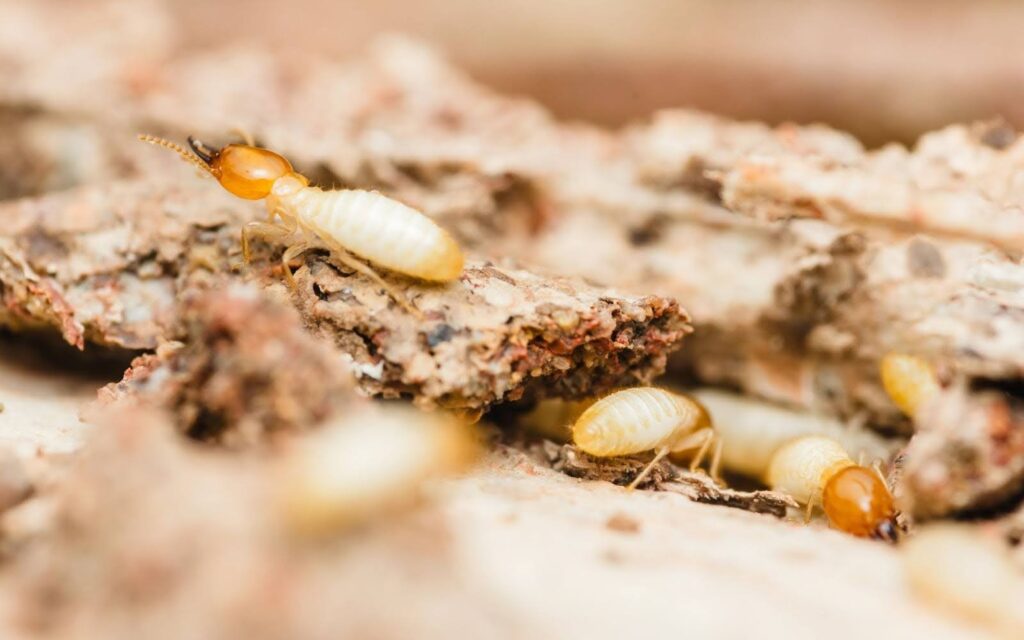Termite infestations are a dreaded concern for property owners, significantly affecting property value and structural integrity. These persistent pests feed on cellulose found in wood, causing damage that can be costly to repair. Understanding the factors that lead to termite infestations can help property owners take the necessary precautions to protect their assets. On the Gold Coast, the struggle against termites is particularly challenging due to a combination of environmental and structural factors. Consequently, it’s vital for property owners and prospective buyers to be informed about how termites are drawn to properties and what measures can be taken to avert an infestation.
The Anatomy of Termites and Their Behaviour
On the Gold Coast, the most commonly encountered termite species include the Coptotermes, Schedorhinotermes, and Nasutitermes. These subterranean termites are highly prevalent and infamously known for their destructive potential. Termites possess a unique biology that suits their wood-eating habits. With specialised mandibles, they efficiently break down wood, while their gut microbiome helps in digesting cellulose.
Termites are social insects that thrive in colonies which can sustain populations of thousands to millions. A termite colony is structured with a queen and king responsible for reproduction, workers that gather food, soldiers that defend the colony, and alates, or winged reproductives, that swarm to start new colonies. This well-organised structure enables termites to expand their colonies and wreak havoc on properties if left unchecked.
Their behaviour is driven by the constant search for food and moisture. Termites communicate using pheromones, which also guide them in finding food sources and avoiding threats. This behaviour enhances their potential for infestation, as they are always on the lookout for new feeding grounds.
Environmental Factors Favouring Termite Activity
The climate of the Gold Coast is conducive to termite proliferation. With its warm temperatures and high humidity levels, the subtropical environment creates ideal conditions for termites to thrive all year round. The wet season, in particular, exacerbates their activity, with moisture-rich environments inviting termites to settle and establish colonies.
Local vegetation and soil structure are also contributing factors. Areas with rich vegetation and organic material serve as natural food sources for termites. Moreover, certain soil types can harbour moisture, thus supporting termite colonies. Termites are strongly attracted to damp environments, as moisture is essential for their survival and the softening of wood.
With seasonal patterns at play, termites tend to be more active during warmer months. The increased activity during this time often coincides with swarming events, where termites seek to establish new colonies, making properties vulnerable to infestation.
Common Property Features That Attract Termites
Some architectural aspects of homes inadvertently attract termites. For example, wood-to-ground contact in structures provides an easy entry point for termites to access a steady food source. The use of untreated wood in construction can also present a significant risk.
Materials play a critical role as well. Timber and other cellulose-based materials are naturally attractive to termites. Once they find a readily available source, they can consume it unnoticed until significant damage has been done.
Landscaping choices can inadvertently invite termites to a property. Dense vegetation close to the building, mulched gardens, and wood piles can all serve as magnets for termites. These features provide shelter and a quick food source, drawing pests closer to the home.
Of course, property maintenance is paramount. Neglected properties with unscreened vents, leaking taps, or clogged drainage are prone to moisture build-up, creating an environment that favours termites. Regular maintenance and repairs can significantly reduce the risk of attracting these pests.
Preventive Measures for Protecting Your Property
To prevent termite infestations, regular inspections are a crucial first step. Understanding how inspections work can help property owners identify early signs of termite activity and take swift action. Annual or bi-annual inspections by a professional can identify vulnerabilities and ensure timely intervention.
Using termite-resistant materials during construction or renovations is a wise investment. Certain timbers are naturally resistant to termites, offering durable protection.
Landscaping should be done thoughtfully. Ensuring proper spacing between vegetation and the property, avoiding excessive use of mulch, and maintaining a garden that doesn’t touch the building can help deter termites.
Moisture control is also essential. Homes should have adequate ventilation systems to prevent the accumulation of dampness. Fix any leaks promptly and ensure proper drainage around the property to minimise attracting termites.
Treatment Options for Termite Infestations
When prevention isn’t enough, considering treatment options becomes necessary. Non-chemical treatments, such as heat treatments and physical barriers, offer effective methods to control termite populations without the use of chemicals.
Chemical solutions are also prevalent, like termiticides and baiting systems that can effectively eliminate termite colonies. However, these should be used with caution, following guidelines to ensure safety and effectiveness.
Engaging professional pest control services is recommended, particularly for severe infestations. Experts have the tools and knowledge necessary to address infestations efficiently and safely. Regular long-term maintenance and monitoring can help sustain termite control measures, protecting the property from future threats.
Conclusion
Termites pose a significant threat to properties, particularly on the Gold Coast, where ideal environmental conditions heighten their activity. Understanding the biology and behaviour of termites, recognising environmental factors, and identifying property features that attract termites is crucial to safeguarding against infestations. Proactive measures such as regular inspections, using resistant materials, and implementing moisture and landscaping controls play a vital role in termite prevention. When infestations occur, a combination of treatment options can effectively mitigate the problem, requiring both individual efforts and professional expertise. By staying informed and proactive, Gold Coast property owners can protect their valuable assets from the devastating impact of termites.

